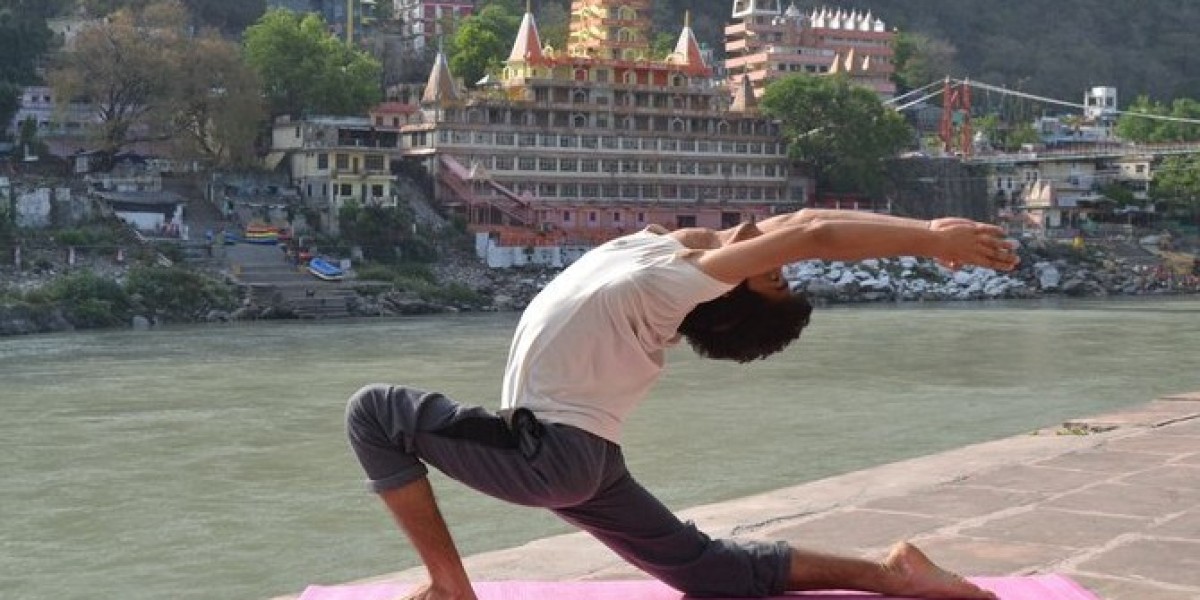Nestled in the serene foothills of the Himalayas and graced by the holy river Ganga, Rishikesh has long been regarded as the "Yoga Capital of the World." Every year, aspiring yoga practitioners and teachers from across the globe journey to this spiritual haven to deepen their understanding of yoga. Among the most sought-after courses is the 200-hour Yoga Teacher Training (YTT), a foundational program designed to transform passionate yoga enthusiasts into certified instructors. For international students, this training in Rishikesh offers not only technical knowledge but also a profound cultural and spiritual immersion.
Why Choose Rishikesh for Yoga Teacher Training?
The town pulses with spiritual energy and is dotted with ancient ashrams, yoga schools, and temples. For international students, Rishikesh provides a unique blend of traditional yoga teachings, authentic Indian culture, and tranquil natural beauty. Unlike commercialized yoga hubs in other countries, Rishikesh retains the essence of yogic living—simple, mindful, and rooted in ancient wisdom.
Training in Rishikesh allows students to learn directly from experienced Indian yogis who are often trained in traditional lineages. This exposure provides international learners with an authentic and holistic understanding of yoga beyond the physical postures.
Overview of the 200-Hour Yoga Teacher Training
The 200 hour Yoga Teacher Training in Rishikesh is a globally recognized certification that adheres to the Yoga Alliance standards. It serves as the first step toward becoming a professional yoga instructor and is ideal for beginners or intermediate practitioners.
Key Components of the Course Include:
Asana Practice (Yoga Postures):
Students are taught the correct alignment, techniques, and benefits of foundational yoga postures from both Hatha and Vinyasa traditions. Daily practice improves flexibility, strength, and body awareness.
Pranayama (Breath Control):
Breathing techniques are a core part of yogic practice. Pranayama sessions help students develop control over their breath, which leads to better focus, emotional stability, and energy balance.
Meditation and Mindfulness:
Different styles of meditation, such as mantra meditation, guided visualization, and silent sitting, are introduced. These practices cultivate inner awareness and calm the mind.
Yoga Philosophy:
Drawing from ancient texts like the Yoga Sutras of Patanjali and the Bhagavad Gita, students explore the spiritual and ethical foundations of yoga. This theoretical understanding helps bridge the gap between physical practice and spiritual growth.
Anatomy and Physiology:
Understanding how yoga affects the human body is vital for teaching safely and effectively. Lessons include skeletal and muscular systems, organ functions, and injury prevention.
Teaching Methodology:
Trainees learn how to sequence a class, give effective instructions, use voice modulation, and make hands-on adjustments. By the end of the course, students are confident in leading classes independently.
Yogic Lifestyle and Ethics:
Living in an ashram environment or a disciplined yoga school introduces students to a sattvic (pure and balanced) lifestyle. Simple living, vegetarian food, and daily routines cultivate discipline and harmony.
Benefits for International Students
1. Immersive Experience:
International students find the immersive setup of Rishikesh deeply transformative. Unlike fast-paced city courses, here the focus is on introspection, growth, and spiritual development.
2. Cultural Enrichment:
Participating in traditional ceremonies, visiting ancient temples, and witnessing the daily Ganga Aarti offers insights into Indian spirituality and customs. Many schools also include weekend excursions and activities like river rafting or nature treks.
3. Community of Like-Minded Learners:
Students from all over the world come to Rishikesh, fostering a rich cultural exchange. Lifelong friendships and a global yoga network often blossom during the course.
4. Affordable Yet High-Quality Training:
Compared to Western countries, yoga teacher training in Rishikesh is significantly more affordable without compromising on quality. Accommodations, meals, course materials, and excursions are typically included in the course fee.
5. Yoga Alliance Certification:
This ensures the certification is recognized internationally, allowing graduates to teach worldwide.
Preparing for Your Journey
If you're an international student planning to enroll in a 200-hour YTT in Rishikesh, here are a few things to consider:
Visa: Most students apply for an Indian tourist visa. It’s advisable to apply well in advance and check the latest regulations.
Packing Essentials: Comfortable yoga clothing, a reusable water bottle, toiletries, and a journal are essential. Modest clothing is encouraged due to cultural norms.
Health Precautions: It’s a good idea to carry basic medicines and get any recommended vaccinations. Also, be prepared for changes in food and climate.
Mindset: Arrive with an open heart and a beginner’s mindset. The experience will challenge, transform, and inspire you in unexpected ways.
Choosing the Right Yoga School
With so many yoga schools located in Rishikesh, choosing the right one can feel like a daunting task. Look for institutions with:
Certified and experienced instructors.
Positive student reviews and testimonials.
Yoga Alliance accreditation.
A balanced curriculum with both theory and practice.
Comfortable accommodation and hygienic food.
Schools like Rishikul Yogshala, Parmarth Niketan, and Himalayan Yoga Association are some of the well-reviewed centers among international students.
Life After the Training
Completing your 200-hour YTT in Rishikesh is not just the end of a course—it’s the beginning of a lifelong journey. Many students go on to teach yoga professionally, either at home or while traveling. Some pursue advanced training, such as 300 or 500-hour programs, while others integrate yogic principles into their everyday lives, careers, or wellness practices.
The wisdom and discipline acquired during the course often extend far beyond the mat, affecting one’s relationships, choices, and worldview.
Final Thoughts
Starting a 200-hour Yoga Teacher Training in Rishikesh goes far beyond earning a certificate—it's a transformative journey that can change your life. For international students seeking a genuine and enriching yoga education, Rishikesh provides the ideal setting. With its rich spiritual heritage, experienced teachers, and global community, the journey is as rewarding as the destination.
Whether you plan to teach or simply deepen your personal practice, Rishikesh opens the door to a more mindful, balanced, and purpose-driven life.








